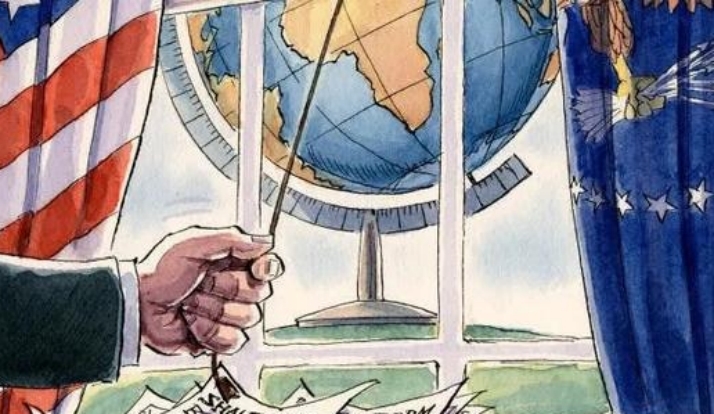
Recently, the latest forecast of HSBC economists pointed out that the Bank of Japan may start the second interest rate hike in the year in October and plans to slow down the reduction of bond purchases from April 2026. Behind this policy adjustment is the difficult trade-off between the recovery of the Japanese economy and external risks. If the consumption recovery stalls or the US tariff policy continues to exert pressure, the timing of interest rate hikes may be postponed to the first quarter of 2026. This development is not only related to the economic prospects of Japan, but also will affect the stability of global capital flows and financial markets.
The Bank of Japan has raised interest rates three times since March 2024, with the policy interest rate rising from -0.1% to 0.5%, the highest level since 2008. Although the current inflation rate is still higher than the target value of 2%, the core inflation has fallen back to 1.6%, indicating that price increases are mainly driven by international energy prices. HSBC economists believe that the Bank of Japan needs to find a balance between "avoiding excessive inflation" and "supporting economic recovery". If the consumption data in October continues to be weak, or the US tariff policy on Japan escalates, the interest rate hike may be postponed to early 2026.
The market's expectation of interest rate hikes has been reflected in the exchange rate and bond market. The exchange rate of the Japanese yen against the US dollar has recently fluctuated intensely, and the yield of Japan's 10-year treasury bond has risen to around 0.8%, reflecting the market's pricing of monetary policy tightening. However, if the interest rate hike is postponed, the Japanese yen may face further depreciation pressure, which will push up import costs and exacerbate the risk of imported inflation.
The Bank of Japan has implemented a quarterly bond-buying reduction plan since July 2024, reducing the scale by about 400 billion yen per quarter, which was originally planned to continue until March 2026. However, the recent surge in the yield of ultra-long-term Japanese government bonds to record highs has forced the central bank to reassess the policy pace. HSBC predicts that from April 2026, the pace of bond-buying reduction will slow down to avoid severe fluctuations in the bond market.
The immediate cause of this adjustment is the debt pressure of the Japanese government. As of the first quarter of 2025, the Japanese government debt accounted for more than 260% of GDP, the highest in the world. If the bond purchase is cut too fast, it may lead to a significant increase in the yield of treasury bonds and increase the cost of government debt repayment. In addition, the demand of traditional buyers such as life insurance companies has decreased, further exacerbating the imbalance between supply and demand in the bond market. Slowing down the bond purchase and reduction can not only stabilize the bond market, but also leave room for fiscal policy.
The uncertainty of the US tariff policy towards Japan is an important consideration for the Bank of Japan to postpone interest rate hikes. If the United States imposes tariffs on key industries such as Japanese automobiles and semiconductors, it will directly impact Japan's exports and manufacturing investment, weakening the momentum of economic recovery. Historical data show that during the trade friction between the United States and Japan in 2019, Japan's export growth rate once fell to -8%, and the manufacturing PMI fell below the boom-bust line.
Global geopolitical risks cannot be ignored. The escalation of the situation in the Middle East has led to a sharp rise in crude oil prices, which may push up Japan's import costs. As a net energy importer, Japan is highly sensitive to fluctuations in international oil prices. If oil prices continue to be above $70 per barrel, Japan's CPI may exceed 3%, further compressing the space for monetary policy.
The policy shift of the Bank of Japan will trigger multiple market reactions. In terms of the exchange rate of the Japanese yen, if the interest rate hike in October is implemented, the yen may appreciate to around 140 yen/US dollar in the short term; if the interest rate hike is postponed, the yen may fall below the 155 mark. In terms of the Japanese bond market, the slowdown in bond purchases and reductions will alleviate upward pressure on yields, and the yield of 10-year government bonds may stabilize at a range of 0.7%-0.9%.
At the level of global capital flows, Japanese investors hold about $3.4 trillion in overseas assets, of which US debt accounts for more than 40%. If the Bank of Japan tightens monetary policy, some funds may flow back to the country, pushing up the price of yen assets and intensifying the selling pressure in the US debt market. In addition, as the world's third largest economy, Japan's monetary policy shift may trigger other central banks to follow suit, intensifying the expectation of global liquidity tightening.
The Governor of the Bank of Japan, Kazuo Ueda, once said that monetary policy would be "based on data", implying that the policy path may be adjusted dynamically. If consumption and investment data continue to improve and external risks ease, interest rate hikes and bond purchases may be implemented simultaneously; otherwise, if downward pressure on the economy increases, the central bank may restart easing tools.
In the long run, Japan's economy needs to get rid of the dilemma of "low growth, low inflation, high debt". Structural reforms, such as improving labor productivity, expanding female labor participation, and promoting green transformation, will be key. Monetary policy can only provide short-term buffer, and the real recovery still depends on the endogenous driving force of the economy.
The policy shift of the Bank of Japan is not only an inevitable choice to cope with inflation and debt pressure, but also a difficult attempt to seek balance in the global uncertainty. The interest rate hike window in October and the bond purchase adjustment in 2026 will be key nodes to test the resilience of the Japanese economy.

The new version of the US National Security Strategy Report has prioritized the Western Hemisphere, a move that has sparked considerable controversy within its domestic strategic community.
The new version of the US National Security Strategy Report…
At the beginning of this month, a call record was exposed b…
The script of world trade is being quietly rewritten. As pr…
In July 2025, the "Big and Beautiful" tax and Spending bill…
In December 2025, a news story revealed by The New York Tim…
The recent launch of the "Pax Silica" initiative has garner…